Hello, I’m thrilled to share the exciting news of the successful launch of Portugal Modern Architecture last week. Your warm wishes have been incredibly motivating—thank you! The website has already attracted 400 visitors from around the globe, and I’m honored that esteemed architects like Álvaro Siza Vieira and Falcão de Campos are planning to contribute high-quality images to enrich our webpage.
As we delve deeper into the modern architectural landscape, it’s essential to recognize how these structures reflect the cultural and historical narratives of their environments. The University of Aveiro is not just an educational institution; it’s a canvas showcasing the evolution of architectural thought in Portugal. This blog post will take you on a journey through its most iconic buildings, examining the stories, materials, and people behind them.
The site is strategically located near the Aveiro lagoon, enhancing the relationship between architecture and nature. This proximity influences the choice of materials and design elements, creating an immersive experience for students and visitors alike. Many consider this union of architecture and environment as a hallmark of contemporary design.
Today, I invite you to explore another remarkable architectural ensemble: the University of Aveiro. Much like Bom Sucesso, this campus showcases the collaborative brilliance of Portugal’s top architects and epitomizes Modern Architecture, resulting in a beautiful and functional space nestled near the water in northern Portugal.
The University of Aveiro campus is also home to various art installations and sculptures that complement its architectural beauty. These artworks, created by local and international artists, invite visitors to engage with the space in innovative ways, fostering a sense of community and creativity.
A Collaborative Architectural Masterpiece
The University of Aveiro’s campus is a testament to the synergy of renowned architects, including familiar names from Bom Sucesso:
Alcino Soutinho, Álvaro Siza Vieira, Gonçalo Byrne, Manuel Aires Mateus, and Carrilho da Graça
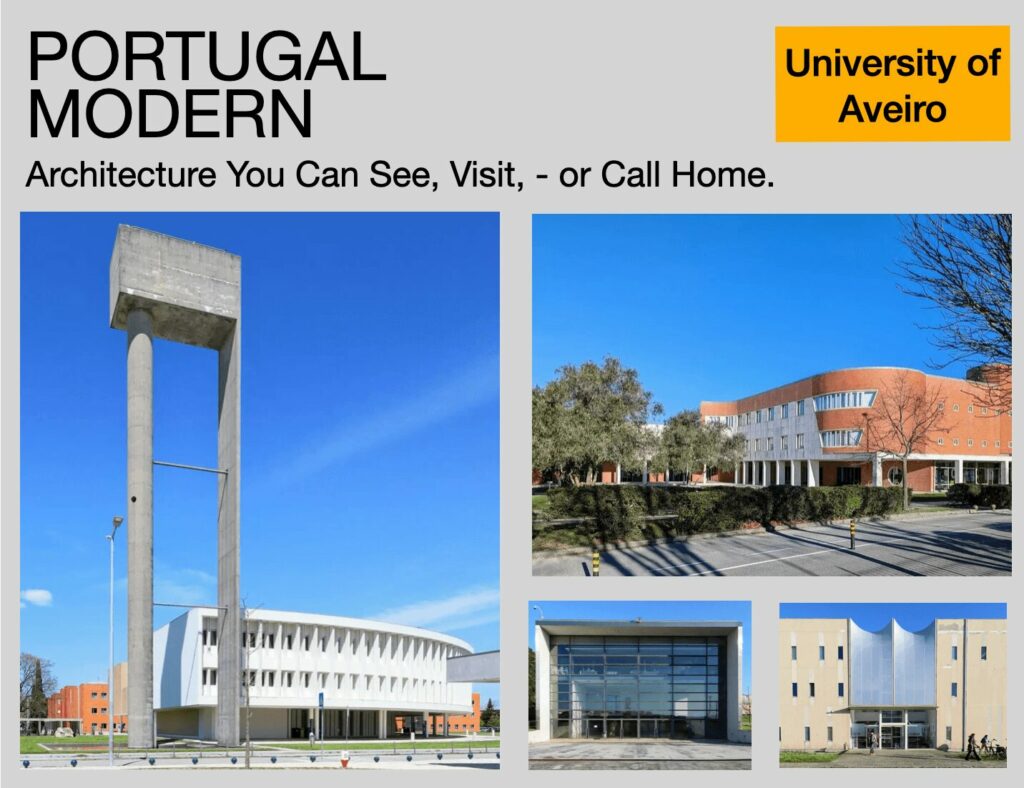
Furthermore, the University Library is not only a place for academic resources but also a hub for cultural activities. Events such as poetry readings, art exhibitions, and guest lectures take place here, reinforcing the library’s role as a pivotal part of campus life. These activities encourage interaction among students, faculty, and the wider community.
For Me, the Most Impressive Are:
Álvaro Siza Vieira’s University Library
The University Library, crafted by Álvaro Siza Vieira, stands as a central feature of the campus. Siza drew inspiration from the geometry of the surrounding salt pans, influencing the building’s layout, horizontal openings, and the interplay of light within the interior. A distinctive curved wall on the western façade filters reflected light, while a continuous horizontal cut at the third level offers seated visitors a visual connection to the expansive salt marshes beyond.
The building also draws inspiration from Alvar Aalto—particularly in the use of skylights and artificial lighting designed to mimic natural light in the evenings.


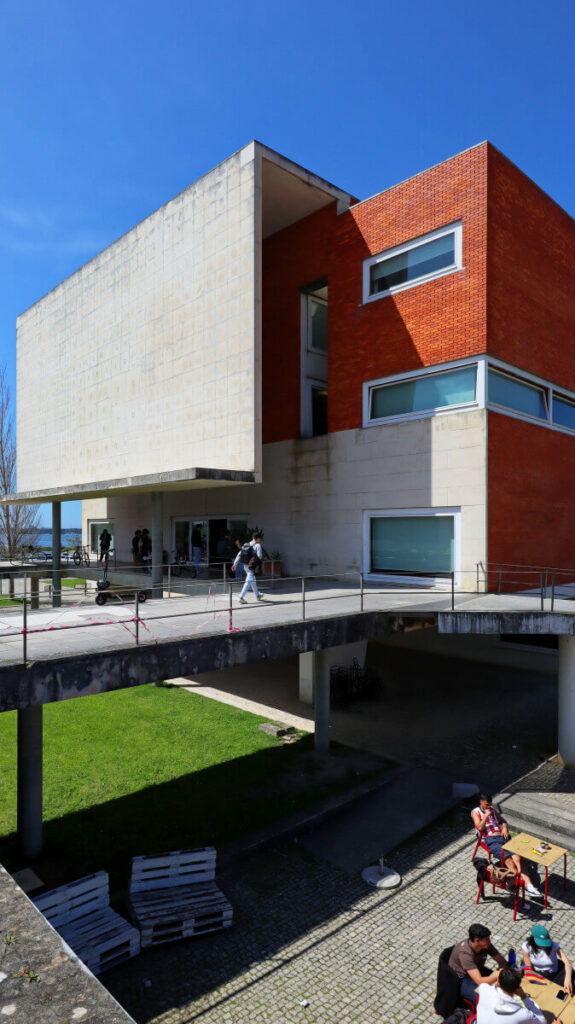


In addition to its aesthetic appeal, the incorporation of sustainable practices in the design of the University Library highlights a commitment to environmental stewardship. Features such as green roofs and energy-efficient systems are integrated into the architecture, making the building a model for future educational facilities.






Embracing Traditional Materials
A notable aspect of the campus architecture is the prevalent use of red bricks—a material choice uncommon in Portugal. This decision pays homage to the historic brick manufacturers located near Aveiro, whose factories you can spot while driving in the region. These materials add a layer of regional authenticity to the campus structures.
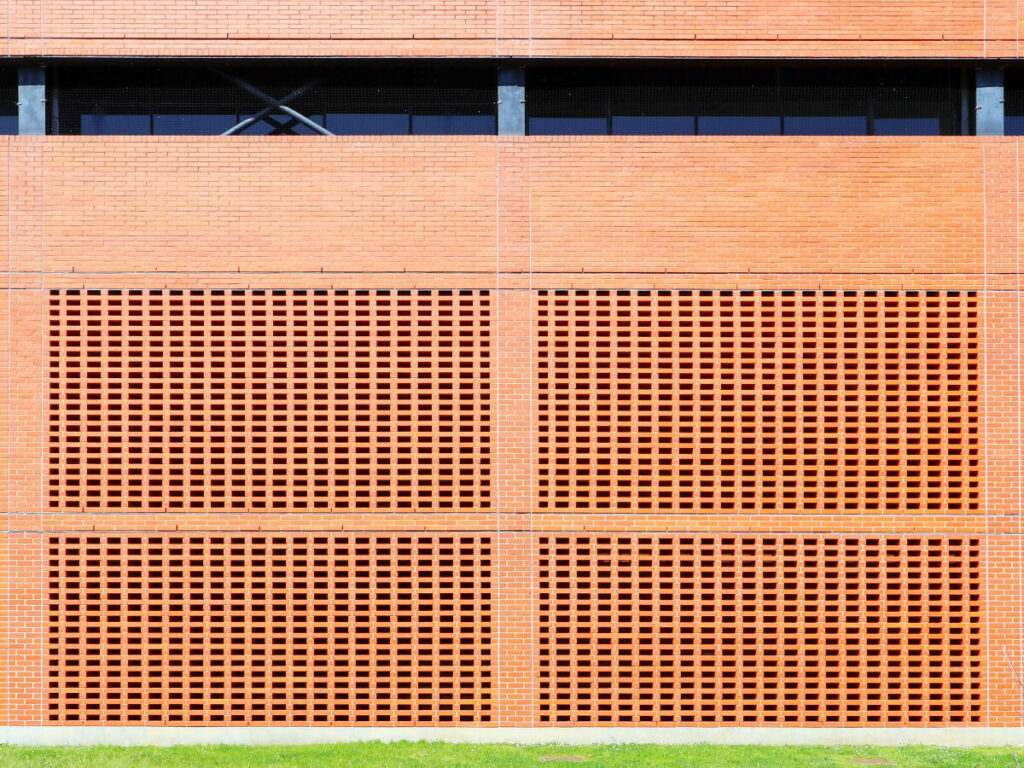


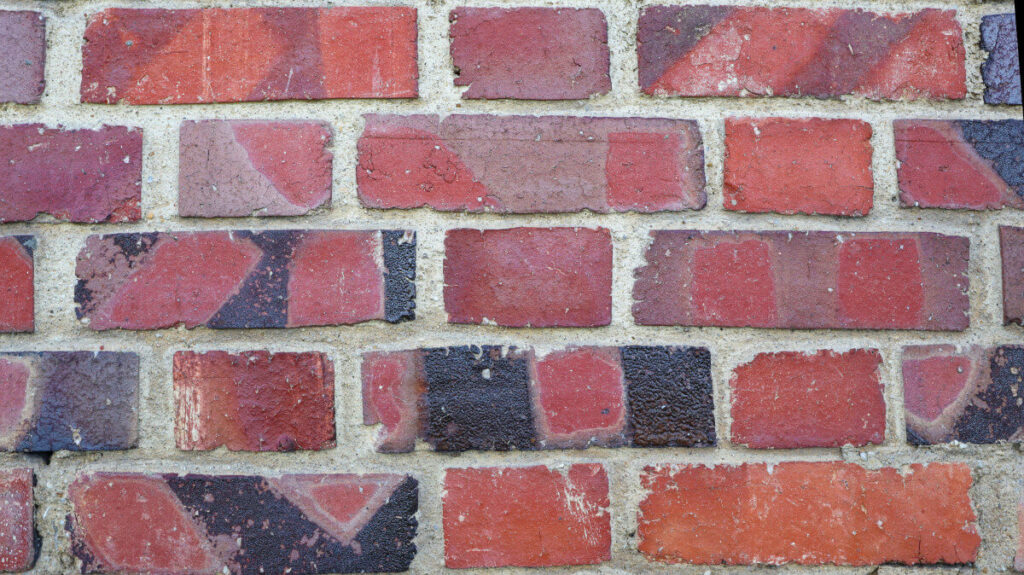














The student residences designed by Adalberto Dias are not just places to live; they are designed with community in mind. Each building includes shared spaces that promote social interaction among residents, facilitating a vibrant living-learning environment. This thoughtful design helps cultivate lifelong friendships and collaborative learning experiences.






Adalberto Dias’ Student Residences
Architect Adalberto Dias designed some of the student residences, which are characterized by their functional design and harmonious integration with the campus environment. The use of red brick continues here, maintaining visual continuity across the campus.
The Chancellor’s Office building is equally significant as it stands as a symbol of the university’s administrative commitment to fostering a supportive and forward-thinking educational environment. The collaboration between Gonçalo Byrne and Aires Mateus reflects a deep understanding of the needs of both students and faculty, ensuring that everyone feels welcome and inspired within its walls.



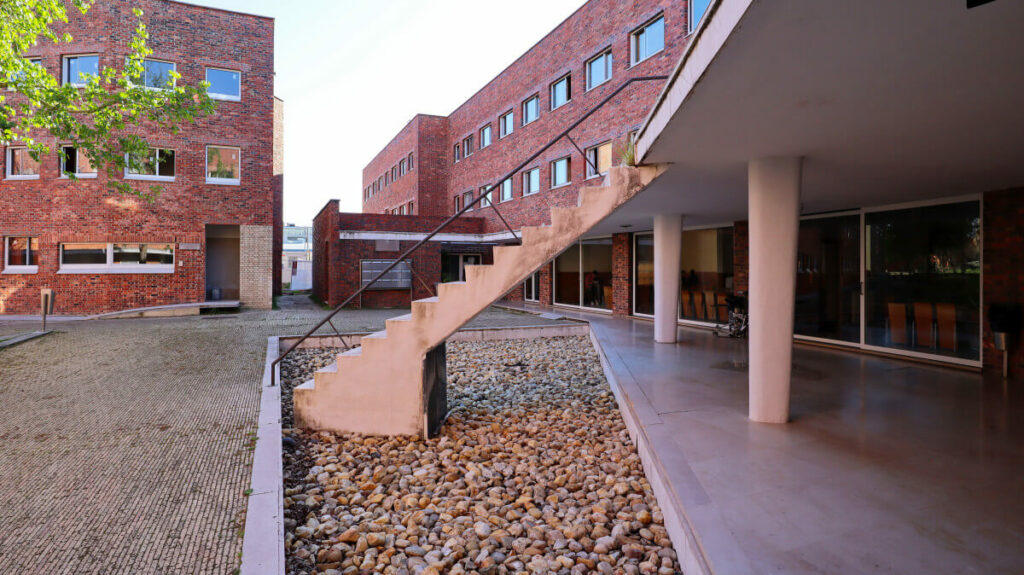








Chancellor’s Office by Gonçalo Byrne and Aires Mateus
The Chancellor’s Office, a collaborative effort between Gonçalo Byrne and Aires Mateus, exemplifies the modern architectural language that defines the University of Aveiro. The building’s design reflects a commitment to creating spaces that are both functional and aesthetically engaging.
Moreover, the University of Aveiro serves as a living exhibition of modern architecture not only through its buildings but also through the events and workshops held on campus. These activities often feature architects and designers who share their insights, providing students an opportunity to learn directly from industry leaders.
To further enrich the architectural experience, guided tours are available, where visitors can explore the campus while learning about the stories behind each structure. These tours are led by knowledgeable guides who can provide context and deeper understanding of the architectural choices made throughout the campus.
Ultimately, the University of Aveiro is more than just a place of learning—it’s a vibrant community that embraces the past while looking towards the future. As we continue to explore Portugal’s architectural landscape, it’s essential to appreciate how these spaces shape our experiences and foster connections among individuals.
In conclusion, I encourage everyone to visit the University of Aveiro to experience firsthand the beauty of modern architecture intertwined with cultural significance. As we celebrate these architectural marvels, we also celebrate the stories and lives they touch every day.



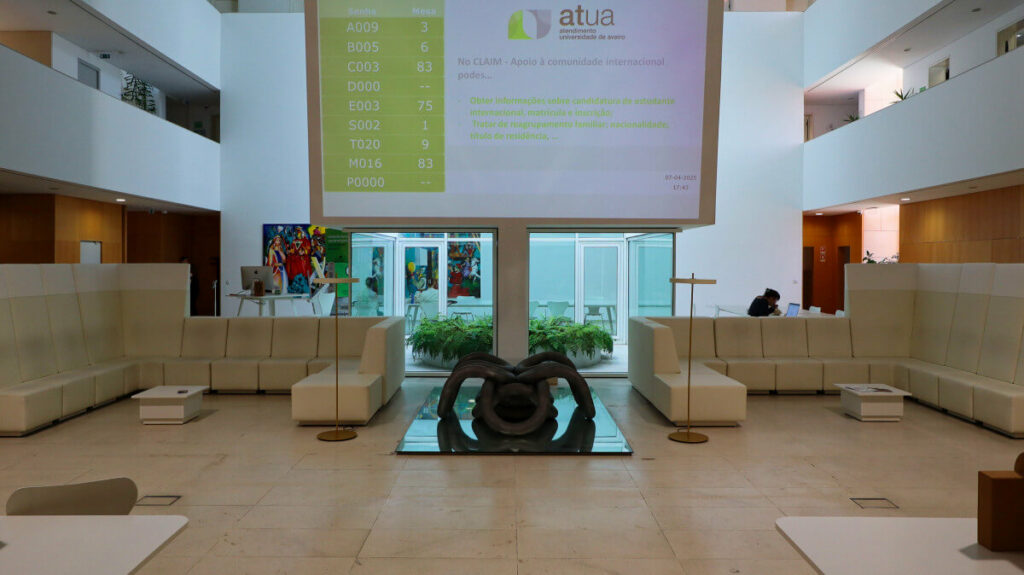








A Living Exhibition of Modern Architecture
The University of Aveiro serves as a living exhibition of contemporary Portuguese architecture. The campus’s cohesive design and the collaborative efforts of its architects have created an environment that is both inspiring and conducive to learning.
I look forward to sharing more insights into Portugal’s architectural marvels with you. Stay tuned for upcoming features on Portugal Modern.
Warm regards,
Ben